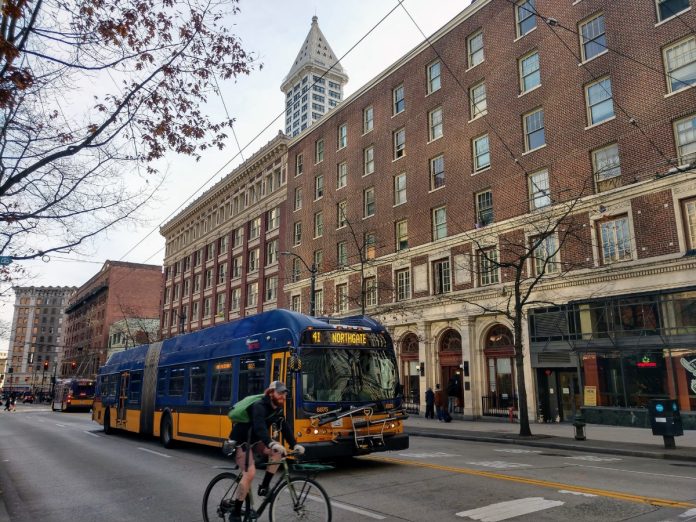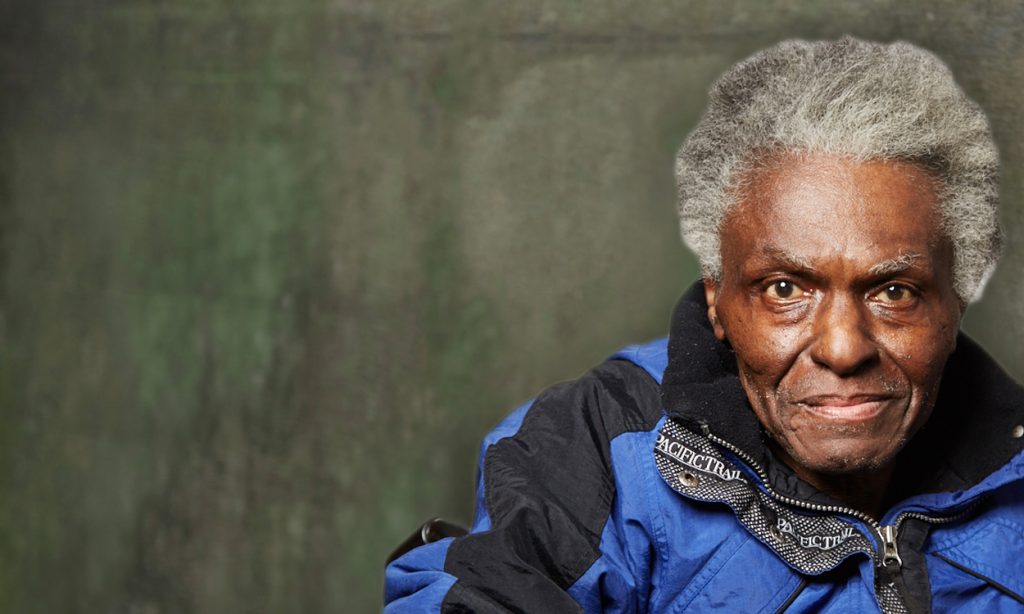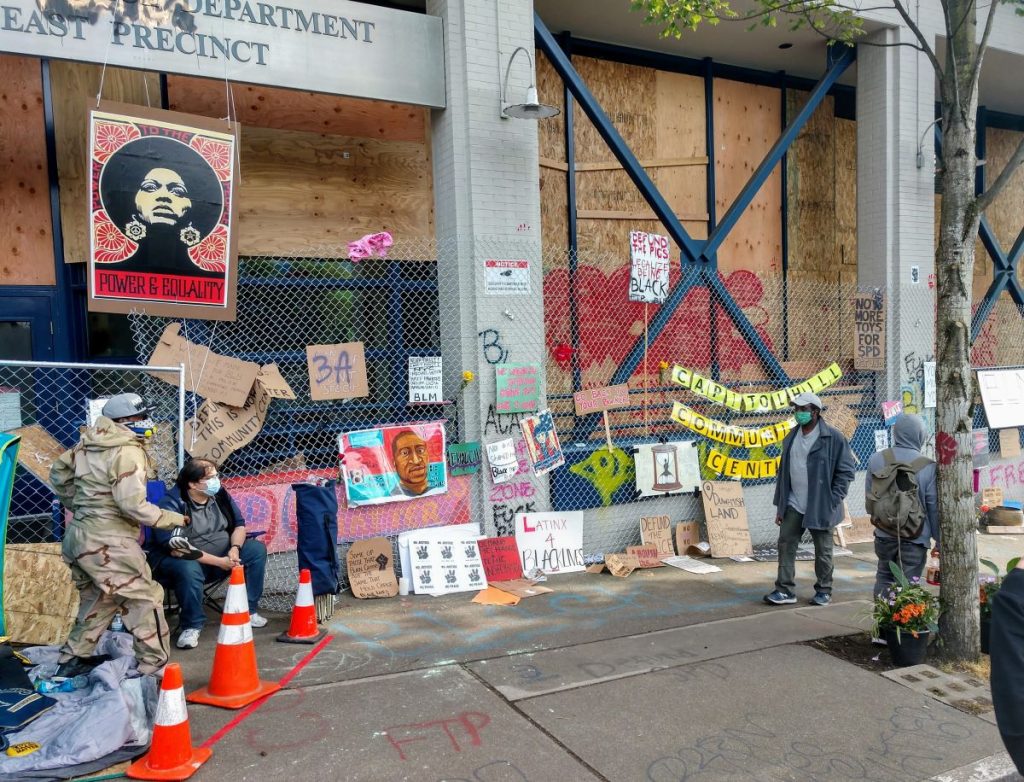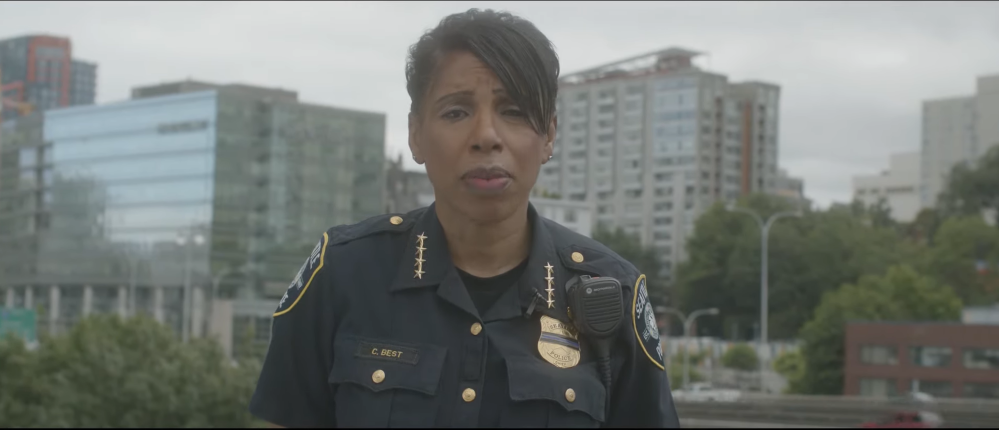
KOMO anchor turned self-anointed homelessness guru Eric Johnson is seeking to recapture the magic of Seattle Is Dying in a new sequel released this month. While in the original Johnson proposes locking up homeless addicts in a prison island near Tacoma for forced substance abuse treatment, the villain in “Fight for the Soul of Seattle” is Downtown Emergency Service Center (DESC), a Seattle-based supportive housing and homeless shelter provider.
There’s plenty of holes in KOMO’s conservative narrative, but from a journalistic integrity standpoint, no error looms larger than the fact Johnson never even sought comment from DESC to confirm his outlandish claims, which impugned DESC’s motives and organizational mission.
“A recent project by Sinclair Broadcasting Group, ‘Fight for the Soul of Seattle,’ conflates and simplifies complex issues, mischaracterizes DESC’s mission, and ignores our successful track record housing and supporting some of the city’s most vulnerable and marginalized people,” DESC wrote in a response released Monday. “The producers of the show never reached out to DESC to request information or an interview. We have deep expertise on these topics, and would have provided details about our work and pointed them to decades of research on proven interventions in addressing homelessness, drug addiction, and other behavioral health issues.”

DESC proceeds to correct Johnson’s slapdash theory of addressing homelessness, a cause DESC has been dedicated to for four decades. With a Sinclair megaphone, Johnson’s gut-feelings about homelessness got a ton of attention, while a nonprofit like DESC must fight uphill to gain support, despite their wealth of direct experience fighting homelessness. Seattle Is Dying got national attention and has over eight million views on YouTube, and Fight for the Soul of Seattle is already past 1.5 million.
Johnson’s idea centers around getting tough and doling out longer prison sentences and forced treatment for addiction–an affliction he wrongly assumes is the primary cause of most chronic homelessness. He melodramatically begins his 90-minute “documentary” by claiming anarchy reigns in Seattle, a theme he hammers repeatedly.
“I’m going to say some hard things about this place–not because I don’t like Seattle, but because I love it,” Johnson dramatically narrates. “And I’m going to start by saying this: Seattle no longer feels the need to stop anyone from doing anything for any reason at any time. The most stunning city in America is dying alright.”
The DESC patiently points out that supportive housing has the evidence to support it where forced treatment does not: “Forced treatment was abandoned because it doesn’t consistently help people and it often hurts them.”
Likewise, most of the homeless people shown in the documentary are human set pieces. Unless they confirm his narrative, Johnson doesn’t talk to them and instead narrates over longshots taken without the subject’s permission. This allows him to invent stories for people he’s never met–ostensibly in the cause of saving imperiled souls. But he never asks how people living in shelters and supportive housing–some of them already dealing with mental illness–cope with a pandemic and recession that’s making life hard for everyone as social support networks fray under the strain of distancing.
Johnson never discusses the issue of crowding in prisons increasing the risk of spreading coronavirus–and prisons have been a major hot spot across the country. He just wants to fill up jail cells even if it’s a de facto disease and even death sentence as jails become overcrowded. While the Pacific Northwest had avoided the worst of this trend, recent signs point to outbreaks in our prisons, too.
The whole thing oozes of suburban gaze refined into conservative propaganda. Johnson channels the perspective of people who commute into Downtown Seattle from the hinterlands just wanting clean streets devoid of poverty, so they don’t have to furrow their brows on the way to a sporting event or a cozy high-paid office job. Is it erasure or healing they want?
In contrast to the KOMO model, the DESC is focused on supportive housing with a continuum of care, providing tenants the ability to stabilize their lives and willingly chose treatment rather than coercing them. The reason this model is superior is not because it makes bleeding heart liberals feel better. It’s because it works–relying on hard evidence rather than anecdotes.
“For well over a decade, we have opened up our low-barrier approaches to housing and support to researchers at the University of Washington and DePaul University,” DESC writes. “Every single research study conducted at our sites has demonstrated that the more you respect people’s autonomy and meet people ‘where they are,’ the more they stay off the streets, the less they drink, the fewer problems they have, and the more money taxpayers save on publicly funded services.”
Part of why Johnson targets DESC is because they signed on to the Decriminalize Seattle coalition (as did The Urbanist) urging the City to cut funding for the Seattle Police Department (SPD) in order to increase funding for community-based public safety and health instead. He also blames The Morrison, the DESC’s supportive housing complex and headquarters, for crime on Third Avenue, noting that 500 block sees the most crime and 911 calls of any block. Of course, the County Jail and Courthouse being around the corner is also linked to that distinction.
Clearly the special is politically motivated, with Scott Lindsay co-producing and starring in the piece. Lindsay was a tough-on-crime public safety advisor to former Mayor Ed Murray who ran for City Attorney in 2017 against Pete Holmes and took just a quarter of the vote. Some expect Lindsay to run for City Attorney again, and his strategy seems to be doubling down on conservative stances.
The special stretches out to 90 minutes as Johnson meticulously lays out a revisionist history of 2020. Two events take center stage: SPD abandoning East Precinct and Carmen Best resigning. In both cases he manages to blame the Seattle City Council while ignoring the complexity of what actually happened.

A little bit of mystery surrounds East Precinct abandonment because neither Mayor Jenny Durkan nor Police Chief Carmen Best say they gave the order. They have instead passed the buck to the precinct commander on duty, but rather than punishing this commander, they’ve sought to deflect blame. On July 1st, Mayor Durkan sent in her troops to retake the East Precinct and sweep the CHOP. So the lasting negative effects of the abandonment and the Capitol Hill Organized Protest (CHOP) seems largely to do with injured pride at SPD and anxieties about being fodder for conservative propaganda rather than signaling Seattle is actually an anarchistic state.

Likewise Johnson omits some key details on Best’s resignation. “The reality is that City Council ran her out of town,” Johnson said. In her own words, Best said the main reason she quit is because she didn’t want to do any layoffs, which the Council had requested. And the inconvenient truth for Johnson’s sob story is Best landed on her feet, quickly snagging a job locally as a KING 5 law enforcement analyst plus a gig nationally as an MSNBC contributor. Her SPD pension will be well into the six figures, which she confirmed before resigning. Carmen Best is going to be alright, and she may have had one foot out the door no matter what the City Council did. It’s easier to play a police chief on TV than in a living breathing city in the midst of a reckoning over racial justice and stalled reform efforts.
Best is also cited as they claim that diversionary tactics won’t work, branding the Council’s strategy a “social experiment.” Johnson and Lindsay are skeptical of this “permissive strategy” and also upset that the No New Youth Jail coalition tried to block the County’s new juvenile detention center and call for an end to youth incarceration. As they lean into tougher sentencing and policing, the racial impact of our criminal justice system is glossed over.
Johnson’s dream is to establish an involuntary treatment center called “Hope Haven” that wouldn’t be a prison, but you wouldn’t be allowed to leave. All the problem cases would go there and we’d wash our hands of it. It’s seductively simple. DESC offers a dose of reality: “To date, there is no evidence to support the idea that coercive treatment or the criminal legal system are effective treatments for substance use disorders, mental illness or homelessness.” They cite an expert, whose talk lays this out in detail.
Rather than make connections to broader societal ills like the skyrocketing housing costs in Seattle, the KOMO special dumbs it down. The pandemic and recession means thousands of Seattleites have lost their jobs or seen their businesses bleed money or go under. While high-end apartments have seen prices go down, many people renting lower in the market haven’t seen relief as their finances have tightened. Meanwhile, the market for buying homes is only getting more ungodly expensive as more people seek to upgrade and get more space to quarantine in.
“But what is different now from decades ago is that with our population and growth boom has also come thousands more people who are suffering on the streets than in any period before. Multiple studies have connected this increase to the rising cost of housing,” DESC correctly noted. “And when you have many more people suffering, you are going to see more problems in the areas where suffering people congregate.”
There is a fight for the soul of Seattle. But that battle is about maintaining our compassion and better virtues even when it’s tempting to lash out or sweep problems under the rug. It’s about solving root problems rather than only playing whack-a-mole with symptoms. KOMO’s documentary has shown us the alternative to a compassionate holistic approach and it ain’t pretty.
Correction: An earlier version state the prison island Johnson highlighted (McNeil Island) was near Everett, but it’s actually near Tacoma in the South Sound.
Doug Trumm is publisher of The Urbanist. An Urbanist writer since 2015, he dreams of pedestrian streets, bus lanes, and a mass-timber building spree to end our housing crisis. He graduated from the Evans School of Public Policy and Governance at the University of Washington in 2019. He lives in Seattle's Fremont neighborhood and loves to explore the city by foot and by bike.

